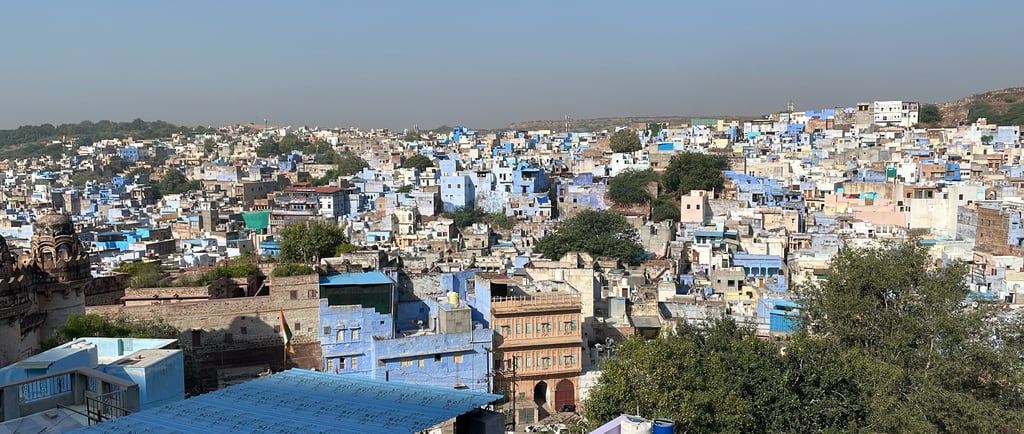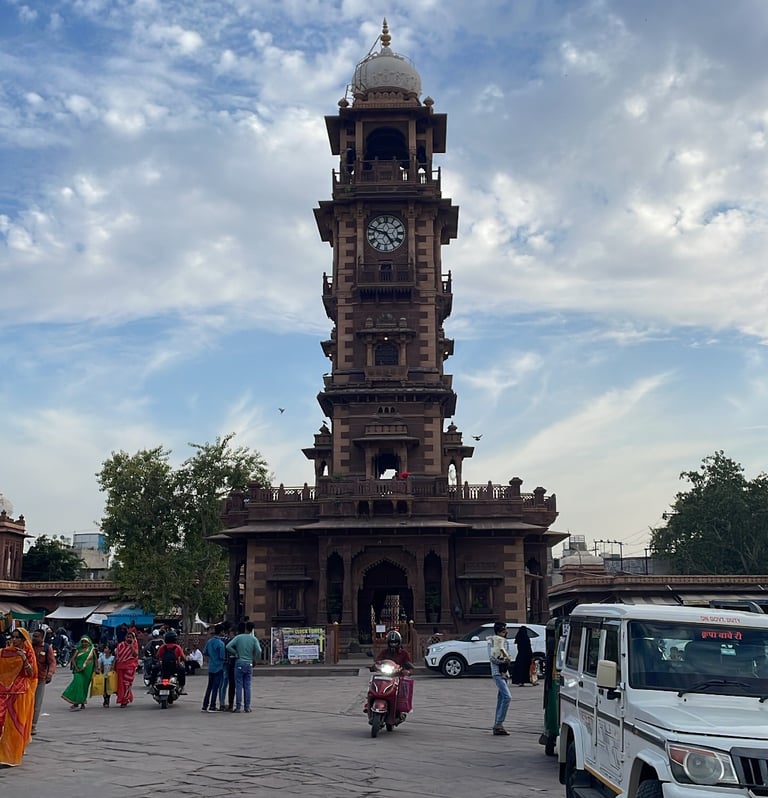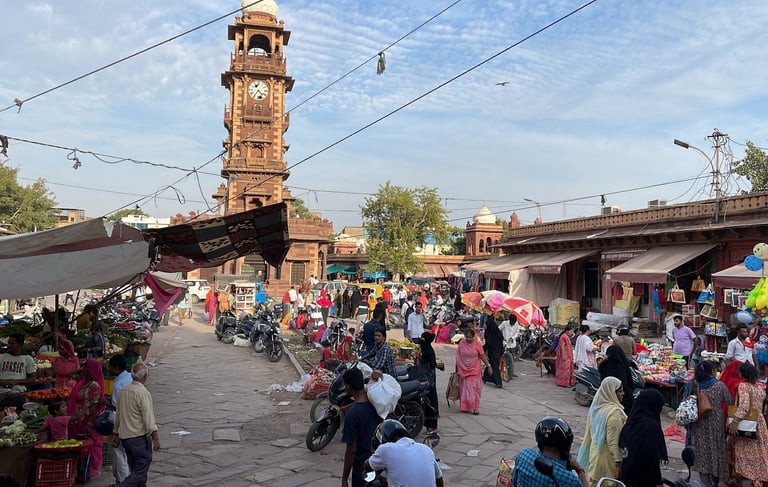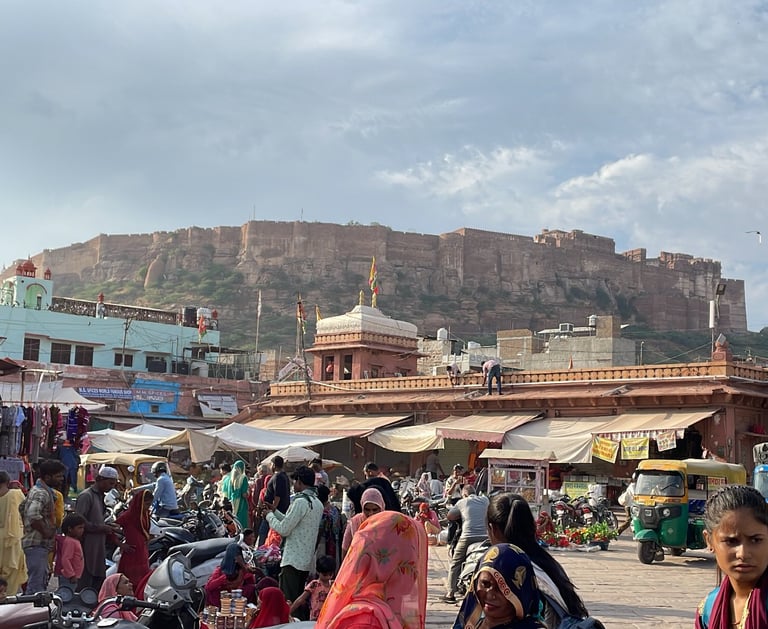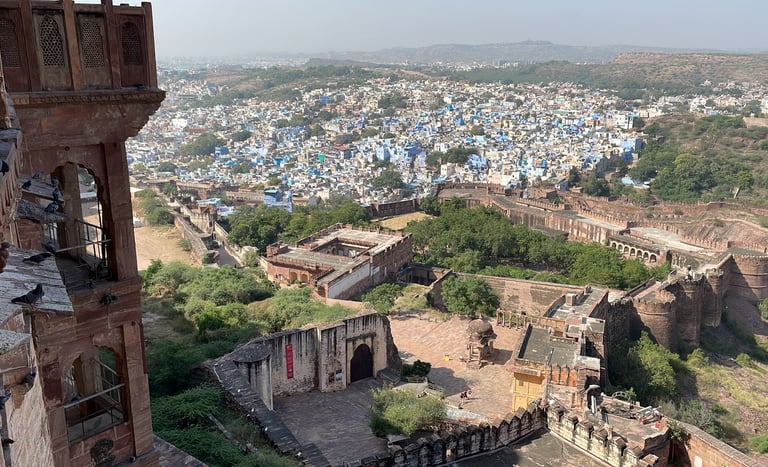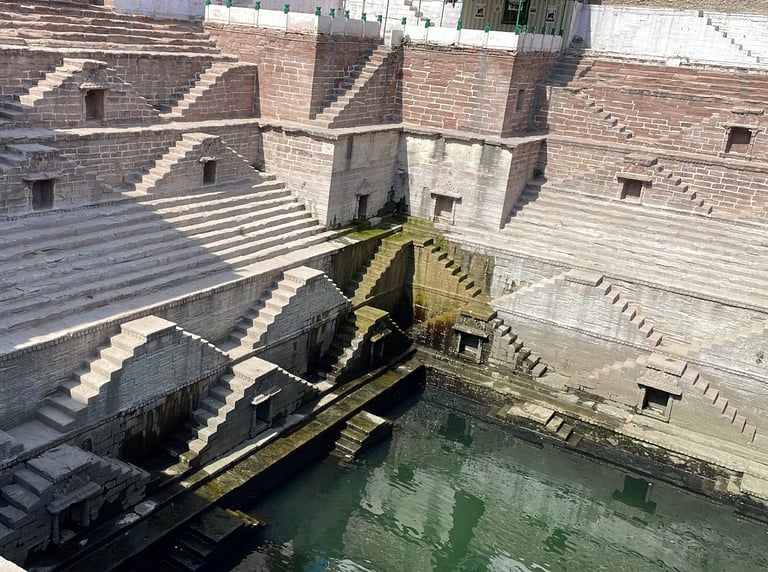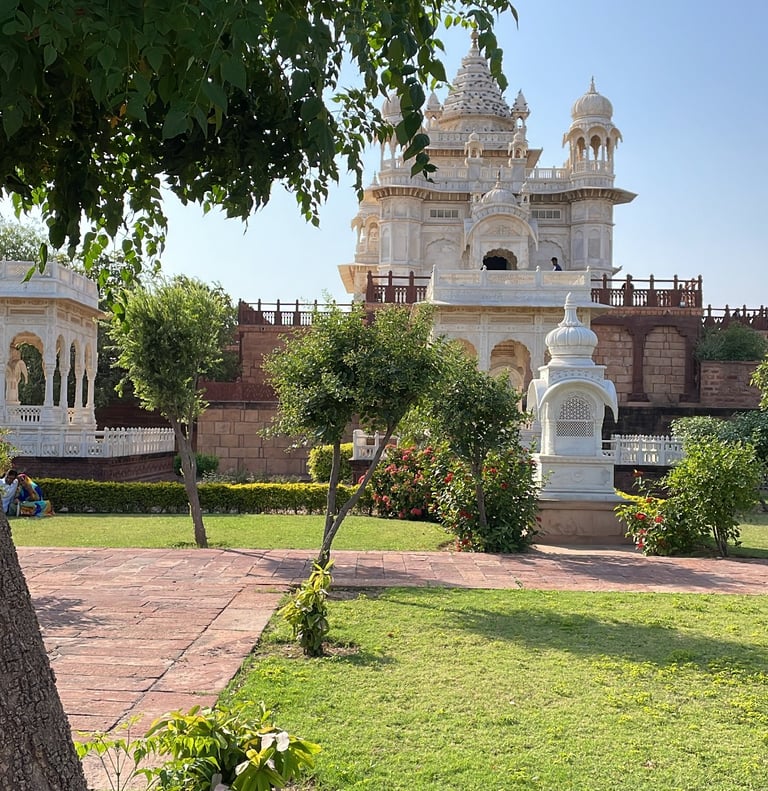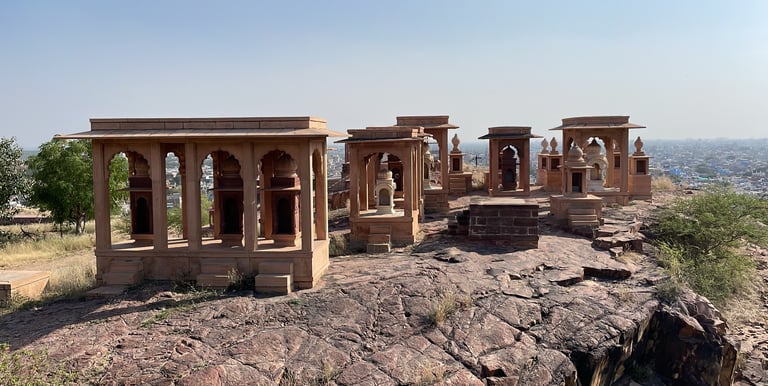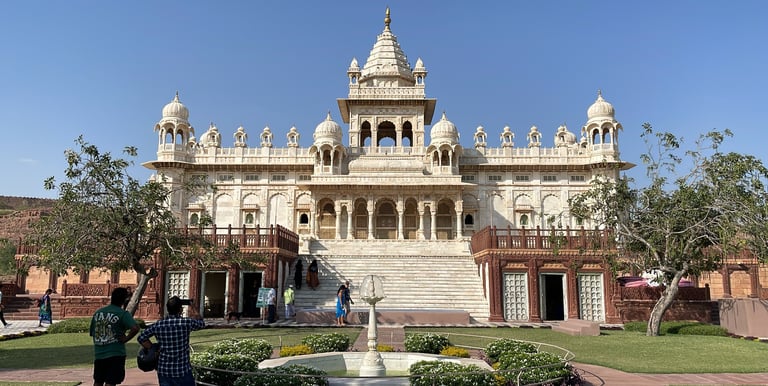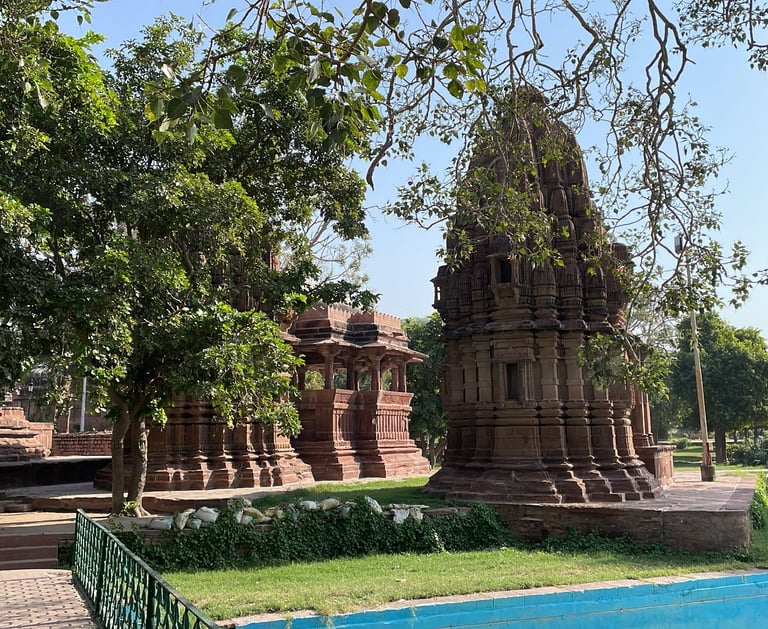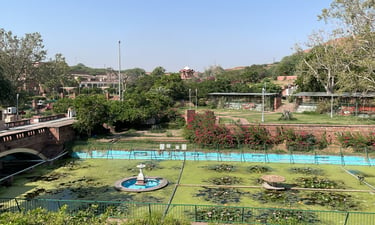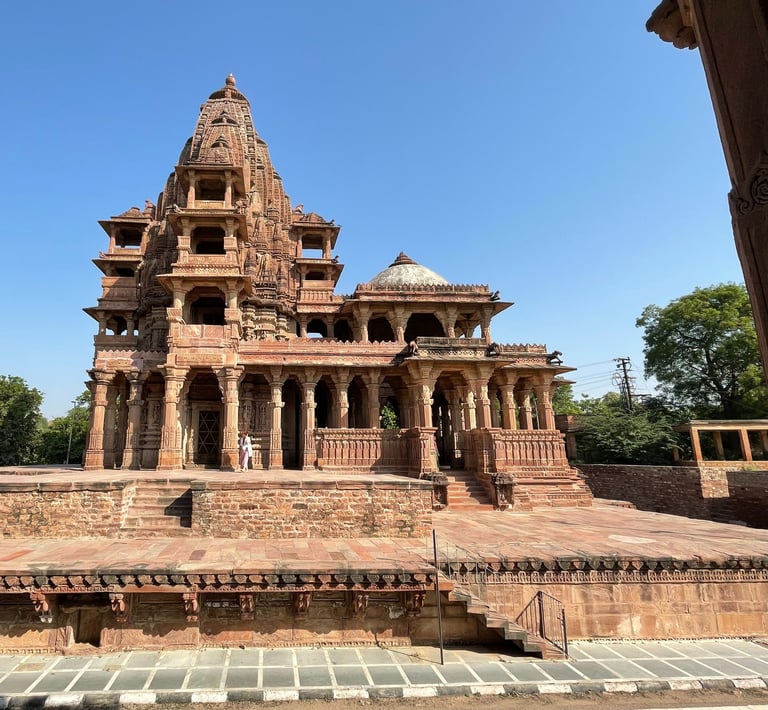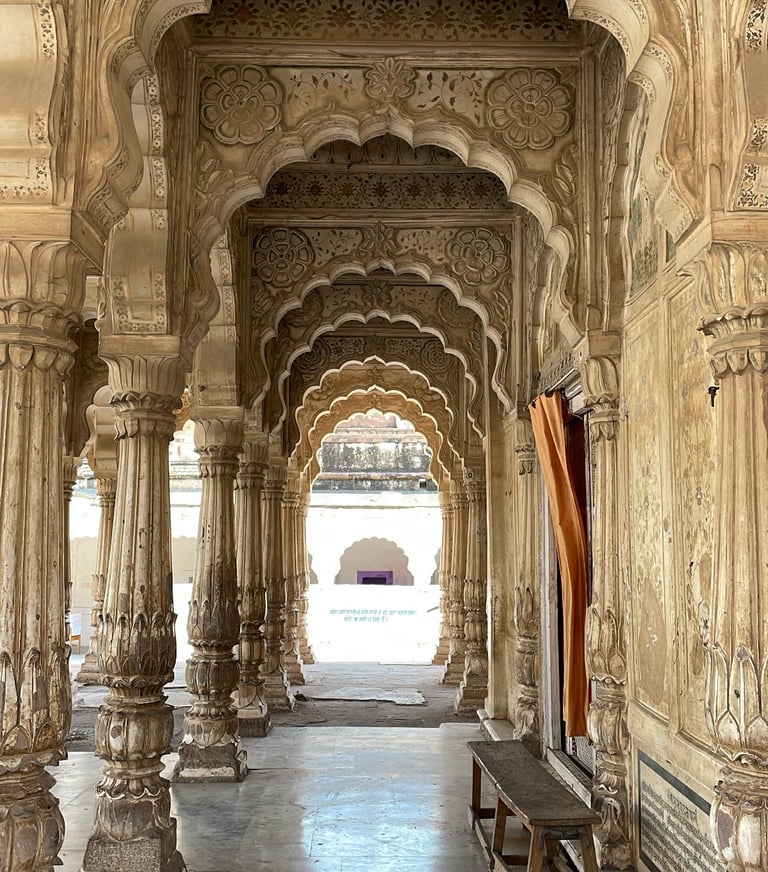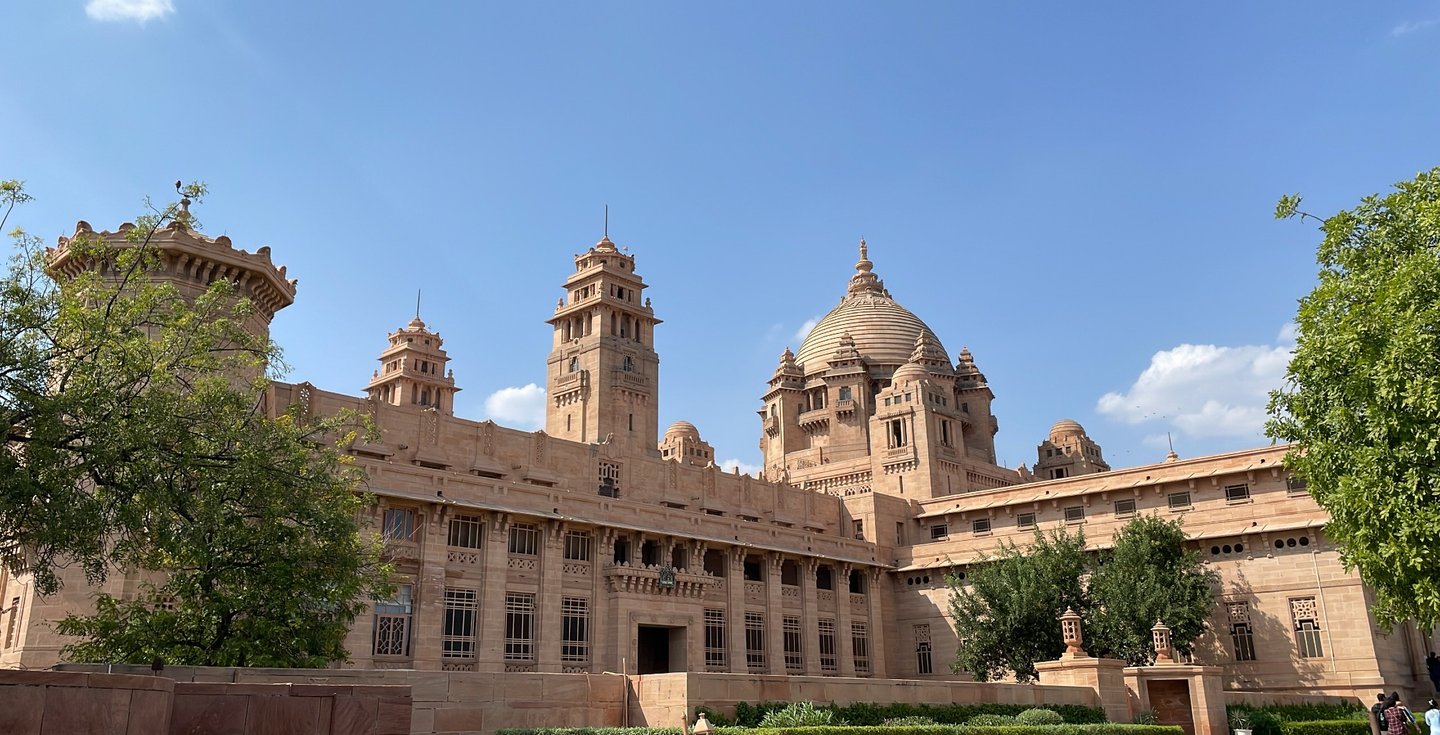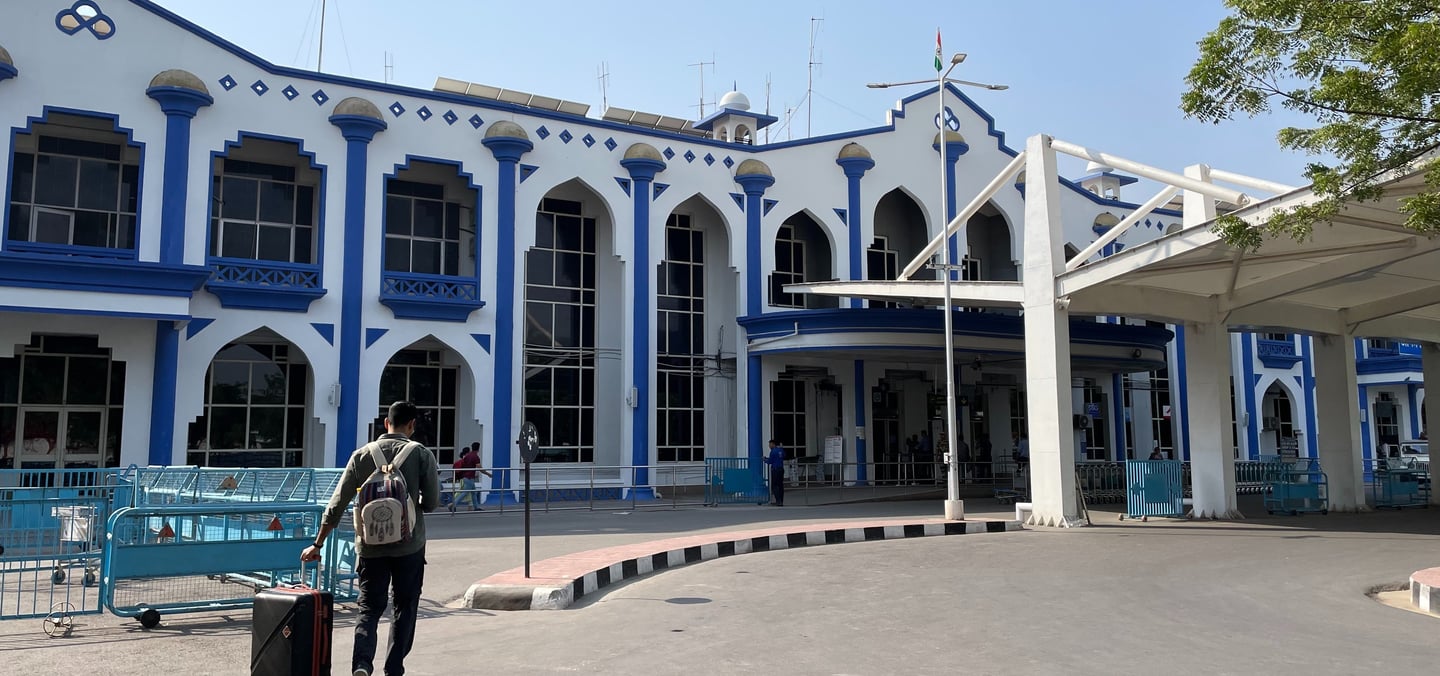Jodhpur: The Blue City
Snippets of the Blue city during Autumn : An experience and itinerary
TRAVEL
Twinkle Suri
1/4/202411 min read
One of my most recent visits was to the Blue city of Rajasthan, India - Jodhpur. It was not a long visit, considering we spent around 3 days in total in that place, but more so they were fulfilling to the most. I’ve visited other famous cities in Rajasthan before - Jaipur and Udaipur to be precise, but there was something different and special about Jodhpur, that one can only discover after visiting the streets, which we had the opportunity to, I’ll describe how. You can take this blog as a travel guide or an itinerary for a short trip, but for me, it was a holistic and beautiful experience.
We arrived at the Jodhpur Airport on 28th of October at around 11:00 am and immediately booked a taxi to the homestay we had already booked for the next three days. An interesting thing about this place, homestays are offered in lavish and registered houses of the city inhabitants only, much more comfortable, nice and affordable than most of the hotels. And yes, the city is fairly connected via Uber and Ola cabs. After relaxing a bit in the room, we went to the nearest restaurant to try some of their version of an Italian sizzler - sizzlers are indigenous to some Indian states, especially Gujarat and Rajasthan, where I’ve spent the last of my recent living months. It was fine, but we decided to route our culinary palettes to the more integral and indigenous foods of the place for our days to come. Having cleared that just after the first meal, we went to the nearest museum - Sardar Government Museum which is situated in the midst of a huge park. You can see the local workers and laborers spending after lunch hours there very easily, indulging in sleep or a game of cards. The museum is not lavish or huge but has small artifacts related to the royals of the city Jodhpur, particularly the Rathores’ and some ancient murals and tableaus. The artifacts made from elephant tusks were exemplary. Not to miss were the kids, who were playing cricket in the almost autumn-like-summer breeze in the surrounding park, and who were kind enough to give us the directions for our way out. This was something appreciable about this city, it has friendly and helpful inhabitants! We took the auto ride from the park/ museum to the main complex of the city, filled with local shops and roadside vendors, the famous Clock Tower (Ghanta Ghar) Market. It is astonishing to see such a huge market in a complex that huge, bordered by 4 open gates and having the famous clock tower in the middle. On all the four sides you can fine all the things that Jodhpur, or for that matter Rajasthan is known for – bandhni clothes to laak jewellery to pickles to souvenirs to local food. An interesting option to explore, there were different types of teas available in this place, and claimed to be a ‘Jodhpur’ special. We usually are accustomed to considering the North -east as the main tea region of the country – but to find this craze and market for different teas such as hibiscus tea, masala tea, Darjeeling tea and oolong tea in such a place was a rare experience to have! And if you are visiting the market, which you much for the heart of the city Jodhpur lies here, you can’t miss to see the nearby markets as well, and on the way savour some local tea, malai lassi, dahi vada, the very famous palak patta chaat, hot samosa and mirchi vada, all of which are vegetarian and are lined for consumption, especially during the evening hours. We had our share from the very famous and I must say, extremely crowded ‘Shahi Samosa Arora Namkeen Shop’, but there are other shops nearby as well. Not to miss were these two delicacies (sweets) that we found in a local sweet shop – ‘Multanji Sweets and Bhati Restaurant’- on our way back to the hotel, the sitaphal phirni and rabri, both of which were so delicate in flavour and so balanced in the sweetness, that words can’t describe. And you got to savour that on your trip to this beautiful city!
The next day after having a light breakfast of some upma and poha, we headed to the very famous Mehrangarh Fort, which is the city’s most famous possession. It is huge, and that is an understatement. Only a section of the fort is open for the tourists to see, and there is an inbuilt museum in the fort, along with a huge open area constituting small parks and a wide-open area to rest and connect with the main wall of the fort, that looks beyond the city. There is the temple in the premises – the Gayatri Shaktipeeth Shree Chamunda Mata Temple, surrounded by a small water body, which is now almost dry but you can still traverse the trajectory of water through that space. Local people still come to that temple to seek the blessings of the divine there, for we also came around a newly married couple coming straight after their marriage, all dressed up in the local fancy marriage attire, seeking blessings for a happy married life ahead. There are shops inside the fort as well for one to buy thing to savour, as well as to shop – ranging from clothes, to expensive jewellery and souvenirs, historical items and local crafts as well. It is easy to find the local folklore being sung and performed by the artists, old and young, in the premises, now and then. And yes, camel milk (plain and flavoured) is now being officially promoted there as a summer beverage to have. Stretched along the borders of the city, you can see that the city started developing along the fort only, growing and growing into now what can be called a quite urbanised and clean place. Multiple locations in the fort give you a glimpse of the whole city of Jodhpur, which is a trademark in the forts in Rajasthan. The old area near the fort still has the benchmark blue city vibe, with the houses tainted blue with ‘neel’ in place of a regular paint. The roads are small and on the walking distance from the fort, one can find another tourist destination – Toorji ka Jhalra Bavdi. It is a traditional ‘bavdi’ with steps to go down, used as a water supply and regulatory body, in the times of the king. It will be interesting to explore the road on foot, especially from the fort to the thada, as on the way one can see the real city, explore and find different (and quite modernised) cafes, restaurants and local shops. The city pays a host to a large number of European tourists, and one can see the way the city tends to the requirements of these guests, in a very pretty and interesting manner. We had our sumptuous lunch of the local delicacy – bajra roti with white butter and gulab jamun ki sabji (yes, the gulab jamuns are fried and instead of dipping them in the sugar syrup that is usually the case, it is cooked in the gravy of onions, tomatoes, yoghurt and cashews, which tastes exquisite for even an Indian palette) in one of the open restaurants near the fort – ‘Gopal Rooftop Restaurant’- with the unique view of the fort behind, which is a thing quite regular here in these rooftop restaurants. You can find a lot of local, small restaurants near the fort – the old city, that offer an open view from their rooftop for the people to enjoy the fort view and eat local delicacies such as ker sangri and gatte ki sabji. Well, the gulab jamun ki sabji was the speciality of Jodhpur, so we had to go for that this time!
Next up was the trip to the Jaswant Thada, situated around a huge water body and the rocks having the statue of Maharaja Jaswant Singh II. It’s a white marble funerary monument, built in honour of the Maharaja and has a huge garden surrounding the main monument, with old reminiscent of the series of small temples built around the premises. It is a clean and peaceful place and one can spend quality time here. The famous Rao Jodha Desert Rock Park is also situation in the same premises, having its way through the same route only. Our second day ended with having dinner at one of the famous – inhouse restaurants in the city – Unaavu. We were fed a delicious south Indian meal starting with white chana thoran and followed by delicacies such as dosa, uttapam, the delicious chutney and sambar and ending with filter coffee. The overall ambiance and appeal of this place was soothing and the food was comforting – it was soft, it was flavourful and it was all things nice!!!
The next day was our last day in this city and apart from the tourist destinations, we wanted to keep it simple and explore more the local city. It is needless to say that the most part of our day as spent on foot, for we decided to go to nearby places like that – exploring the actual Jodhpur city in which people live. Our first place to visit was Mandore Gardens, situated at about 9-10km distance from the main Jodhpur city. Mandore is actually a town located near the famous city, but one shouldn’t miss going to this place for the beauty it offers. Unlike Jodhpur, there are negligible number of international tourists here and it is usually filled with people in the evenings, taking a stroll through this huge garden. But, as exemplifying as it was for us, the monuments inside the garden, as well as the huge temple (called ‘the temple of 33 crore gods’) with such intricate and delicate architecture and carvings that I couldn’t take my eyes off of it for so long! The gardens also have the cenotaphs of many rulers of the Jodhpur estate, lined one after the other and growing immensely in size as one moves forward. It also has an inhouse government museum, said to have been made in the place where the queen used to come and spend her summers; and an eatery for some local meals. It is surrounded by a large number of water bodies, though not thoroughly cleaned, but still increasing the overall beauty of the place. Just outside the gardens, on the roadside, one can see a huge line of stalls serving local snacks and mini meals to have. We had come to this place via an autorickshaw, but decided to go back via a local minivan/ bus connecting the town to the city, like a local. We were headed to this old temple built in 1812 AD – Mahamandir Temple - located in the inside of the local city, not remotely related to any tourist site, that we had dug up and found out ourselves. So, we walked through the local city, traversing the roads and seeing everyday Jodhpur life, just to be astonished beyond belief to find this beautiful temple, inside the premises of which now is a government school running. The pictures here depict the just the side of the main temple, and the premises around now pays host to a number of government teachers and students. The inside of the temple is not maintained at all, for just an old woman taking care of the place – but it was an experience to see something like that – the other side of the city. We walked from the temple to one of our favourites South Indian chain restaurants (‘Sankalp’- found just in Gujarat and Rajasthan in India) to savour a good south Indian meal followed by going to the last tourist destination of the trip – The Umaid Bhavan Palace. Now mind me this place can be seen from anywhere in Jodhpur, being located at a hilltop - from landing at the airport to Mehrangarh fort and what not, but it’s a very small place to explore. The reason being, only, I think 1/10th of the whole palace is open for tourist visits, rest being used as a hotel cum private property. The formal royal family of Jodhpur still lives here and tourists are welcome to experience luxuries like royals at a price, for it is being maintained by the Taj Hotels. It is beautiful though, the architecture being done by Henry Vaughan Lanchester and has a museum for the tourists visiting the palace showing royal ways of living, the old artefacts and prized possessions of the Jodhpur royal family. The section of the palace open for people to visit has a dome structure, shows the life and times of the Rathore royal family, serving times of the Maharajas in the forces and an outside display of international vintage car collection owned by the royal family. The wall of the place are decorated with the paintings of Ramayana and other folklore, but the interesting part is that since the curators weren’t Indian, the paintings look like a mix of Indian folklore with thai-greece influences on the art forms and the Gods. It is interesting to see such an architecture and imagery though, and the main centre dome gives you a feeling of being in a European palace. I wish it was open more for people like us to see, for we tend to appreciate and perceive art in almost the raw format, and are ready to explore, but not always at the cost of a price. Well, it was a short visit to the palace after which we decided to end our time in the city by going for a local movie. We had a good time, exploring more of the city on foot and coming our way back to the homestay, just to end the journey on a simple and calm note! And of course, we didn’t miss out on bringing back the famous mawa kachori – another Jodhpur delicacy, for our loved ones, on our way back to home!
Jodhpur is a must visit place for people interested in exploring Rajasthan as well as understanding the culture better. I’ve not seen people wearing the traditional Rajasthani dresses in any city of Rajasthan that I’ve visited till date, but it was a regular affair in Jodhpur. Apart from the tourist attractions and destinations, from having a tea at Rs.5 per cup to walking into a government school in a temple premises, from being calm and composed about its modernity in all that it has preserved of its culture till date, Jodhpur is a fine find in the long desert of modernization. Visit this city and explore the intricate details yourself!

